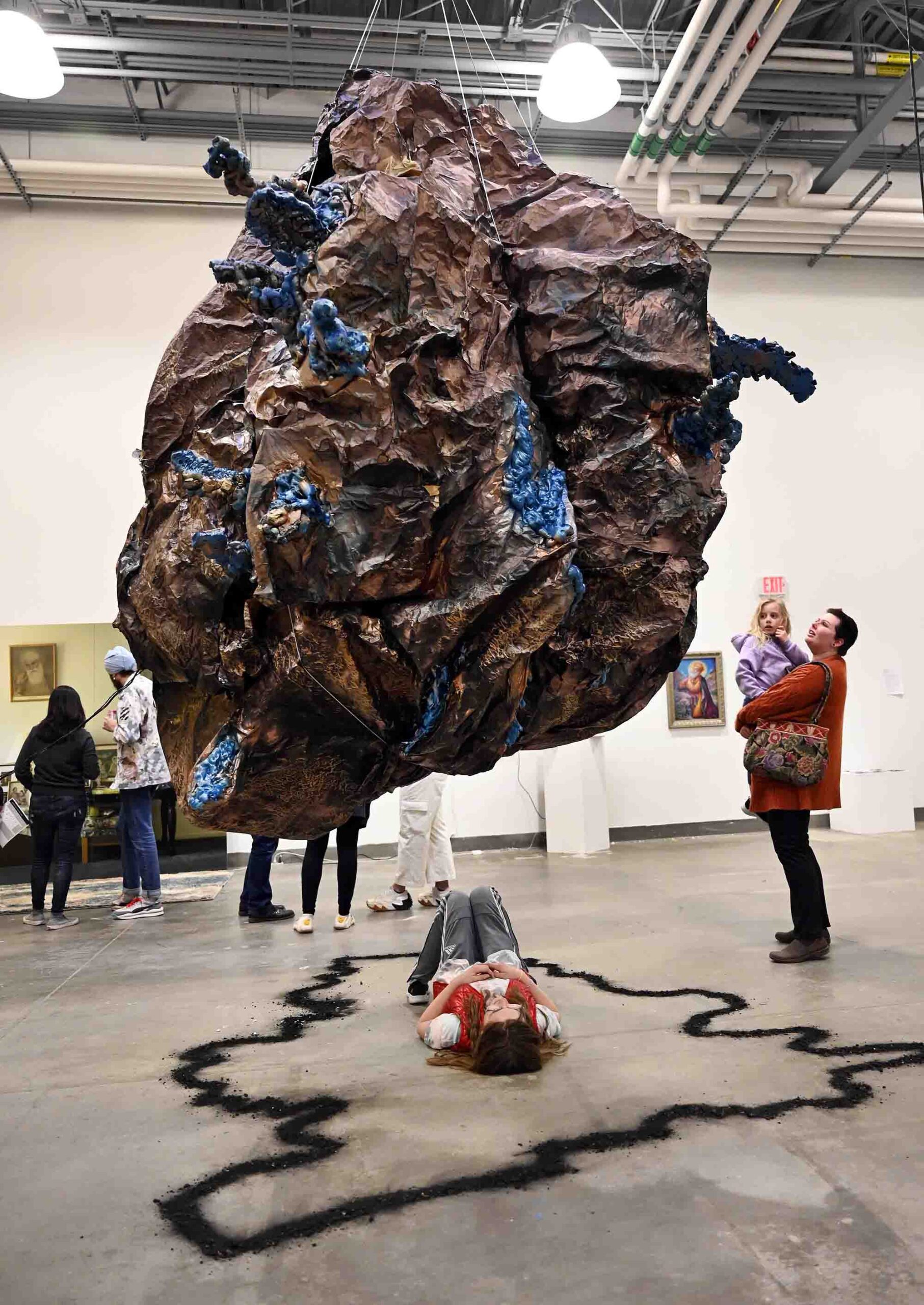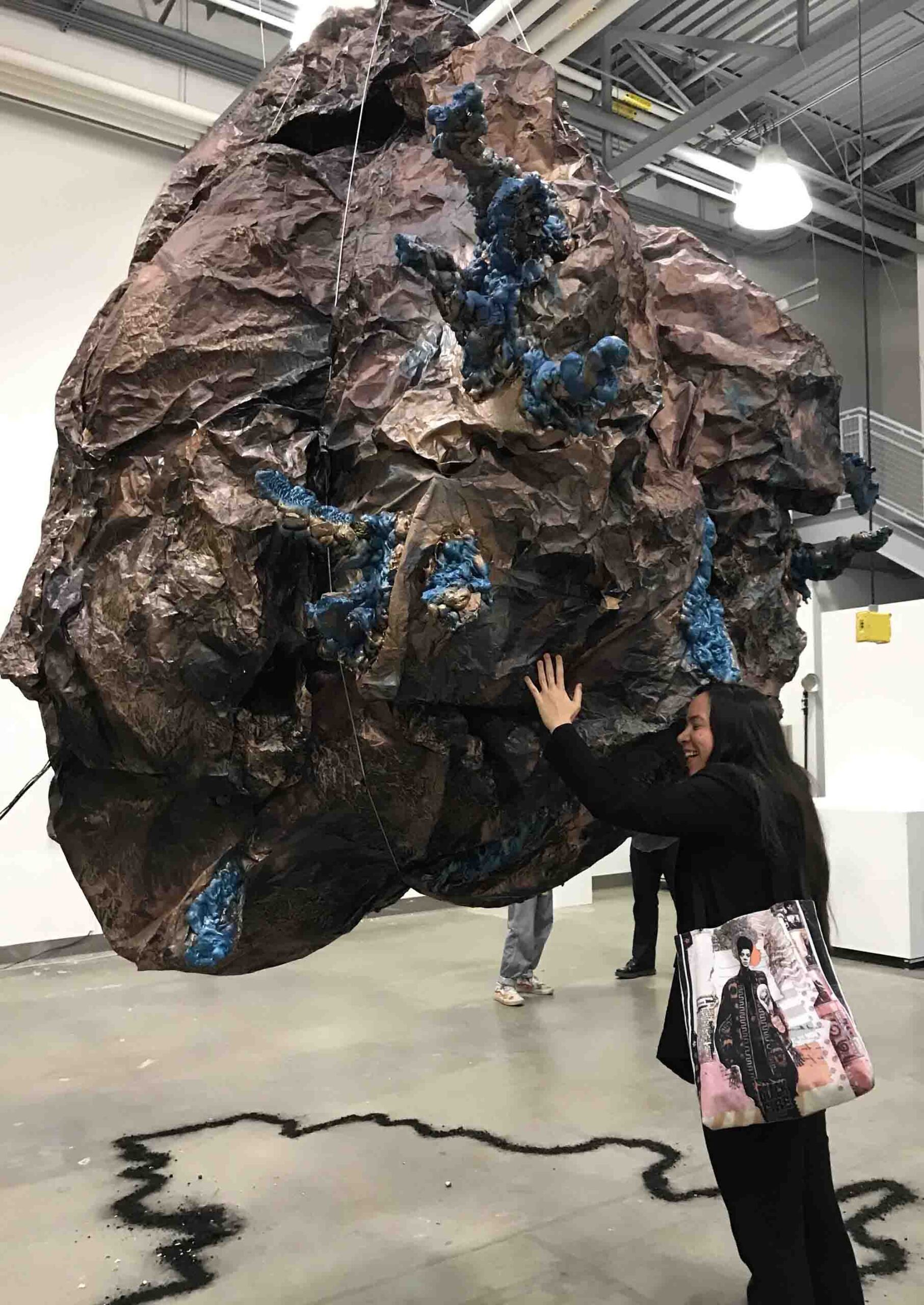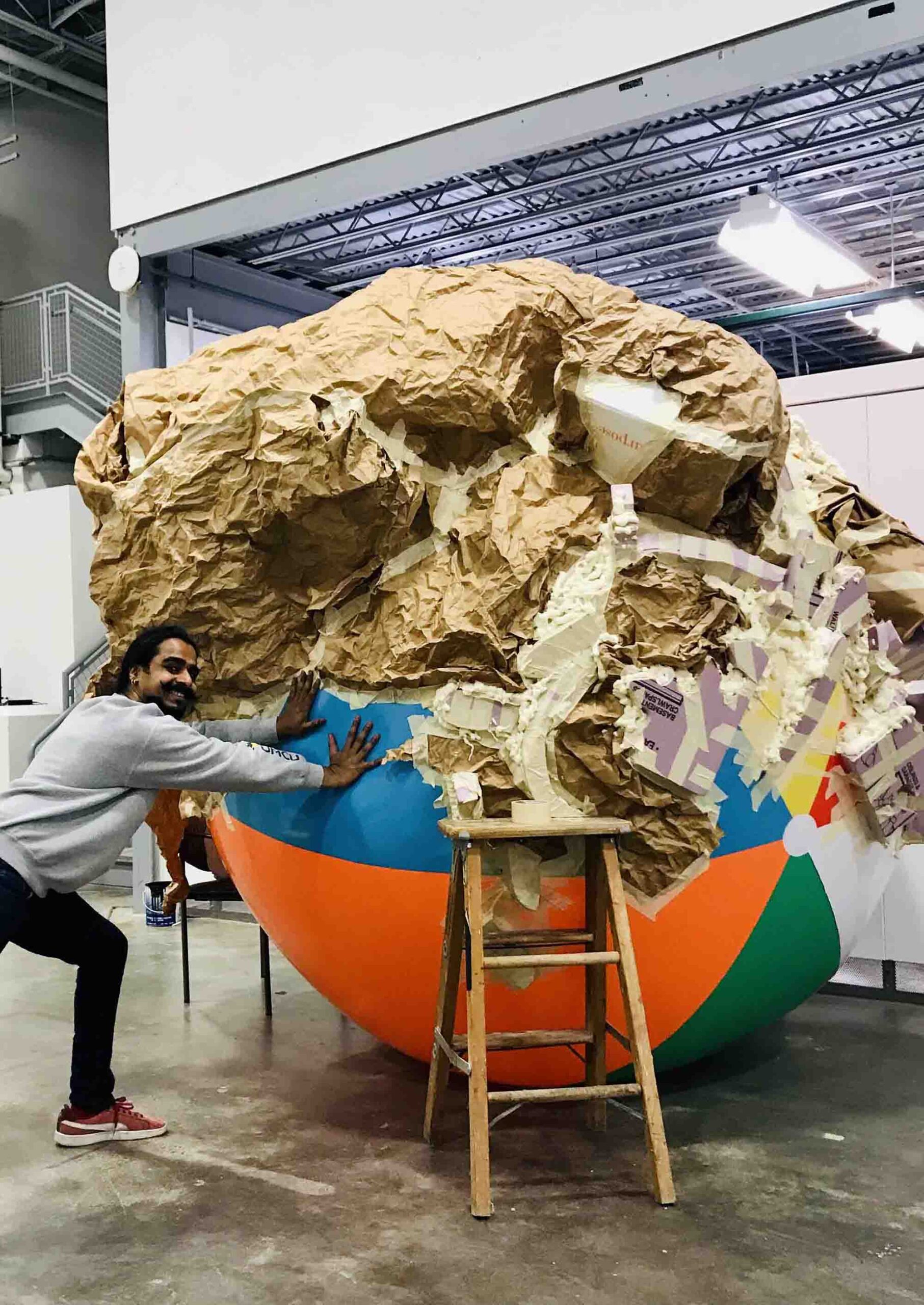


TRAVERSE
Sujay Saple – Penny W. Stamps School of Art & Design
Collaborators: Japmanjeet Singh Gill, College of Engineering; Gloria Ahlijah, School of Music, Theatre & Dance; Leah Crosby, Penny W. Stamps School of Art & Design; Conner Singh, School of Music, Theatre & Dance
‘Traverse’ is a time-based performative installation, created through a collaboration between an MFA installation artist from Stamps School of Art and Design, a Masters student-dancer from the School of Music, Theatre and Dance, a PhD candidate-robotics engineer from the College of Engineering, and a PhD candidate-musicologist from the School of Music, Theatre and Dance. The overall project outcome will include three phases. The project will take place across the winter and fall semesters 2023.
‘Traverse’ draws inspiration from an excerpt from Irish poet Seamus Heaney’s 2006 poem ‘Aerodrome’: If self is a location, so is love: Bearings taken, markings, cardinal points, Options, obstinacies, dug heels and distance, Here and there and now and then, a stance. Place can be understood in many ways: as home/homeland/country/territory–ideas that have become excessively fraught in our present polarized debates around them. The last decade has seen tumultuous crises of displacement, from the Syrian exodus, to the CAA issue in India, to the recent Ukranian situation–all posing complex questions of past and future ‘belonging’. In the United States, too, we are seeing a public reckoning of past histories of violent colonization, and acknowledgements of territories usurped. In these contexts, it is difficult to negotiate where and how one belongs, especially if one’s political stances contradict the State’s populist manifestos. A geographical position is inextricably connected with a political positionality, both sharing a tenuous relationship within an individual and how they think about place. Does having a place (owning land) in this world truly give you a place (voice)in the world? The very act of staking claim or taking a position can be seen as a stance. This installation-performance will become the metaphoric place, the territory, the piece of land where visitors will critically investigate and experientially navigate all of these ideas.
Phase 1 is an immersive installation that will include two sculptures which evoke landscapes, on either side of the room. The landscapes will be kinetic, with one seeming to disintegrate while the other seems to grow. Phase 1 is an early exploration into the sentient nature of materials–understood here as their reactive, reconstitutive or kinetic properties which make them change their state in a short time frame and therefore appear alive or ‘performative’. This will create a sentient and transient idea of place that will enable viewers to engage with it in a different way.
Phase 2 is a choreographed immersive performance with performers, spectators and the installation all in the same sentient environment. The choreography and design will serve to include, implicate and displace both spectators and performers, as they traverse through these built landscapes. This will highlight the relationship between place and its loss, the presence of external factors and the absence of agency.
Phase 3 invites spectators to participate in a ‘performative questionnaire’ inside the installation environment, which interrogates their own relationships with place–their beliefs, biases, implicit associations and inherited dispositions. Spectators ‘answer’ these questions by making choices and performing them using their bodies, through simple actions, gestures, partnerings and spatial positions–which get contextualized within the (d)evolving installation. The project references and is influenced by several processes and works, namely the sculptures of Tara Donovan, the sonic installations of Zimoun, the ‘Choreographic Objects’ series of choreographer William Forsythe, the participatory site-specific works of Zuleikha Chaudhary, and the installations of Rebecca Horn.
‘Traverse’ addresses two ambitious questions: It asks how complex, charged narratives could be synthesized into the sparseness of a few materials which propel spectators to take an embodied, intuitively informed stance on how they feel about place. Secondly, it interrogates if a built location and the objects and bodies within it can become performative, in and of themselves. Critically building upon each phase to arrive at its final iteration, the project enables spectators to navigate the tensions and consequences of live choice-making, of ‘performing’ their choices (and having them witnessed), as they experientially assess their own beliefs and responses. This project will privilege self-produced, haptic and sensorial modes of knowledge production about our own experiences of place and belonging. It will propose ways of orienting viewers to sites and sites to senses. It will seek to understand what formal interventions could generate stances of empathy, solidarity, alienation or apathy.
After 20 years of working in the arts, my current research interests here at Stamps have shifted to the role of the spectator in the arts and the role of the arts for the spectator. Divisive governments around the world, as central to their political discourse, decide on the basis of race and religion who can stake claim to a place and who will remain a perpetual outsider to it. In India, the State often historicizes mythology and mythologizes history to impose its own perverse decisions upon territories, monuments and citizens. In recent years, anti-CAA protests erupted all over the country to oppose the State’s agenda to expel Muslim citizens on a fabricated basis of identity. Some of my own work has sought to respond to such events, from ‘Agent Provocateur’ in 2018 which explored the body as a site for religious indoctrination, to ‘Walk To The Future’ in2019, a huge protest parade with over 2000 artists and citizens against religiously motivated hate-crimes. At this stage, I believe that creating participatory, tactical and interactive art projects will allow me to explore how materials and built environments themselves can facilitate embodied experiences, and implicate the viewer, in order to challenge the status quo and various dominant narratives that we inherit.
Project Update
One aspect in which the research evolved was to consider the idea of sentient territory in a more nuanced and holistic way, inseparably combining conceptual interactivity with material explorations in order to absorb the spectator in more tactile ways.
Some new insights came from Rosalind Krauss’ landmark essay Sculpture in the Expanded Field. Wanting viewers to encounter Krauss’ idea of the ‘nomadic’ monument while simultaneously encountering/interacting with an object that seems to be OF a place (fictional as it may be), my final project developed into a giant boulder-like kinetic sculpture, suspended from the ceiling and ‘untethered’ from the ground in its nomadicism.
Slowly expanding and contracting, it was proposed as a territory that was alive, i.e, the sculpture ‘breathed’ in the gallery space in ten-minute cycles, growing large and rising above head height, and then deflating and shriveling to almost touch the floor.
In my research, I wanted to explore object performativity through motion and kinesis, so my robotics collaborator Japmanjeet Singh Gill used electronic pumps programmed through Arduino software to make the sculpture “breathe.”
To further complicate the blurred lines between object and site, on the floor I outlined the shadow that the sculpture cast when fully deflated, with powdered coal – the shape suggesting a map of a fictional territory, delicate to the touch. Visitors walked around or into the territory, touched, hugged and interacted with the breathing boulder, and they even laid down inside the territory under the sculpture – above them the shapeshifting chunk of land, under and around them a fragile boundary of coal dust which morphed and distorted with their movements and footsteps.
Enabling visitors to imagine fictional geographical or psychological landscapes while bodily inhabiting a physical one, my intention was to provoke an encounter with place that was contentious, uncertain and ephemeral – while the weight of the question of place hovered ominously above them. Towards the end of my research, I realized the main relationship I wanted to create in the interaction was one of weight (both physical and metaphorical) and its relativity, with the object appearing simultaneously heavy yet buoyant, hardened yet animated.
Thus, the biggest ways in which my research has evolved are towards creating much more tactile, embodied and complicated material relationships between the viewer and the installation, instead of ones limited to passive visual spectatorship. Building on the insights gained from viewers’ behavioral interactions during the final exhibition, I additionally developed a short ten-minute movement piece for the performance component of my AiiR project, in collaboration with a live musician from SMTD collaborator Conner Singh.
The piece was performed by myself under and in dialogue with my installation, with viewers sitting in extremely close proximity along the outlined shadow of the boulder. There was only a tiny entry point for viewers to take their seats, which forced them to walk very close to or along or on top of the powdered boundary of the “map” – which they either ended up destroying with their footsteps, or had to balance their bodies precariously in order to avoid doing so. When finally seated, they had to choose whether to keep their feet “inside” or “outside” the fictional map – propelling them to perhaps consider ideas of belonging and exile.
The boulder sculpture was fully inflated and high up at the beginning, and over the ten-minute performance, it slowly deflated and sagged, generating a soundscape of crumpling noises emerging from within the boulder, which were contradicted (in character and position) by the music from the instruments coming from the opposite end of the large gallery space. Both, the sonic and the physical performance elements added new layers of meaning to the sculpture’s themes – internal landscapes, the heaviness of the question of place and belonging, and the tenuous relationship between body and territory.
